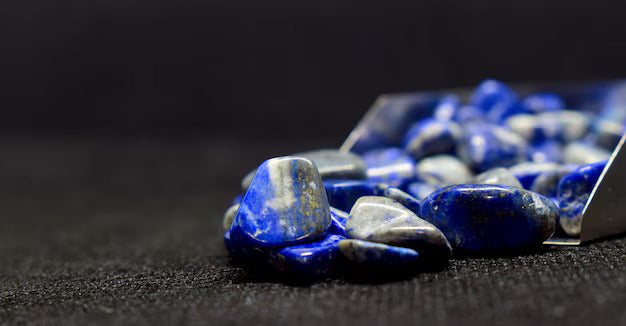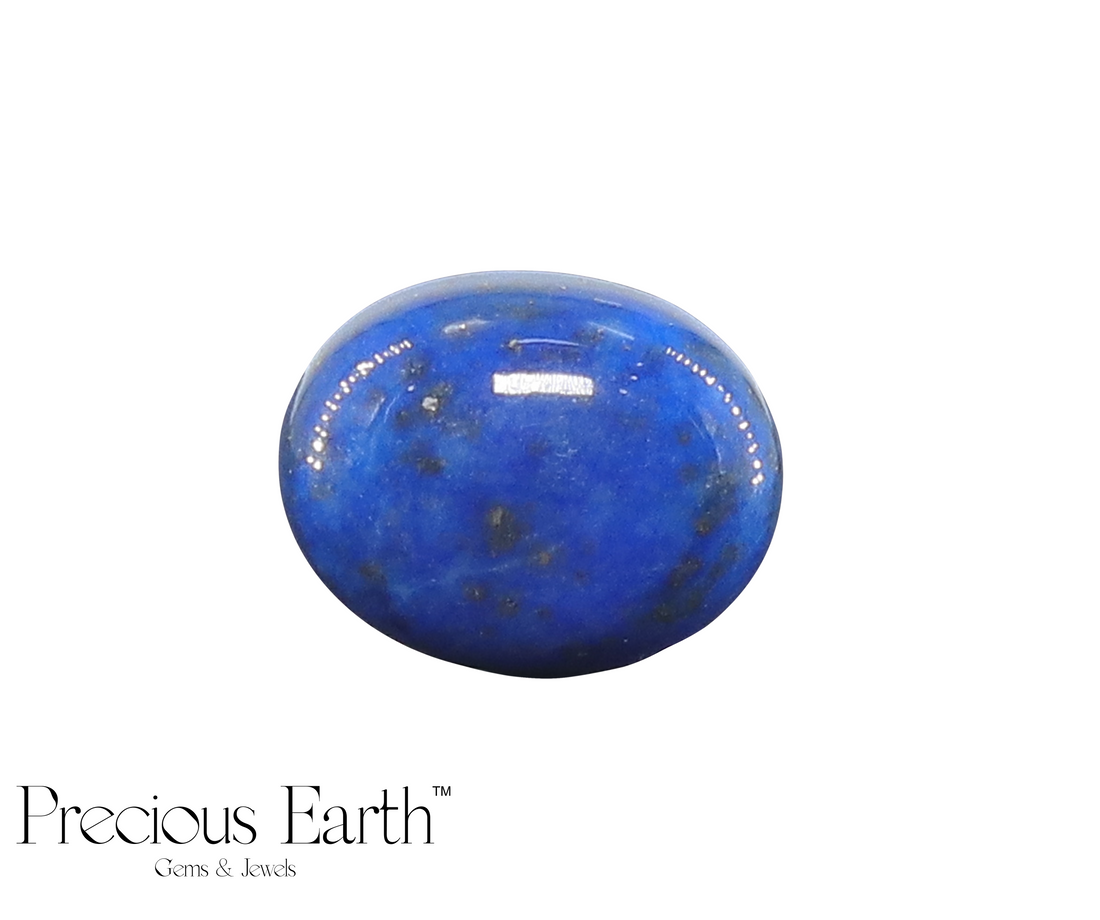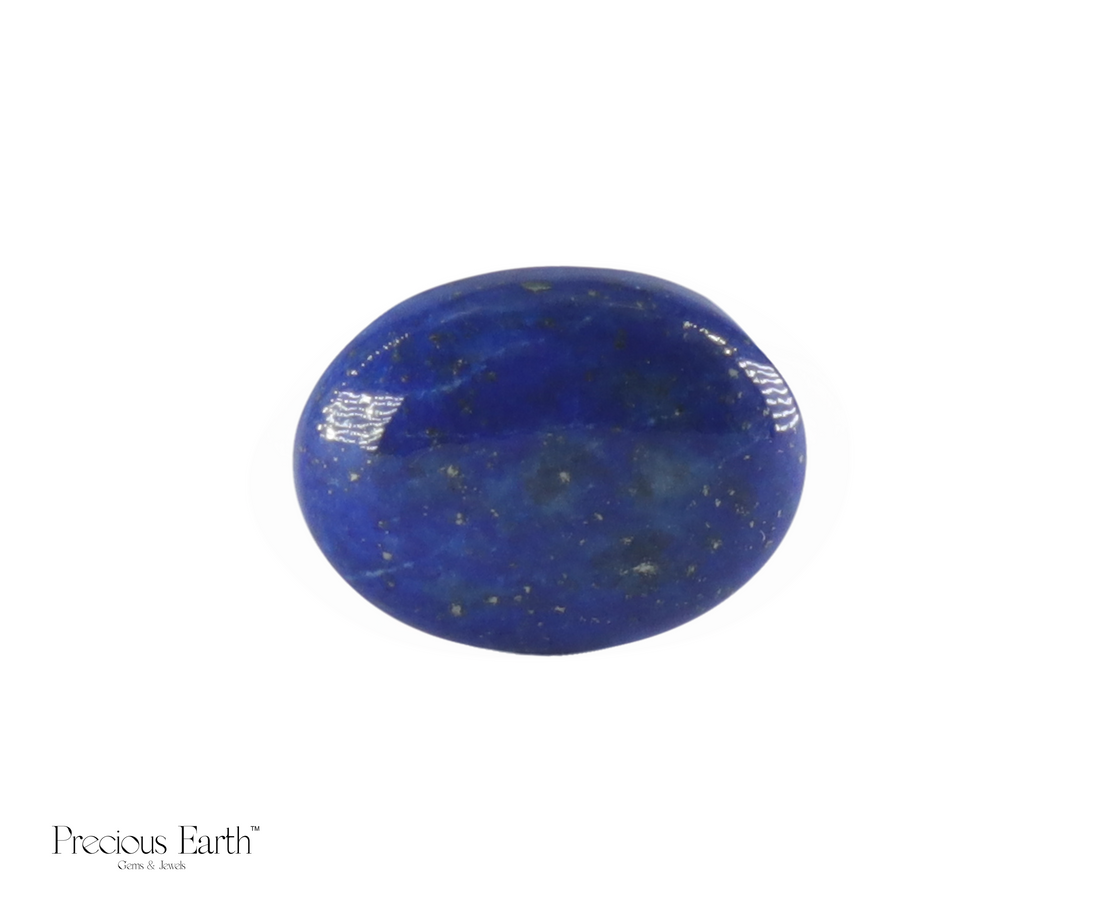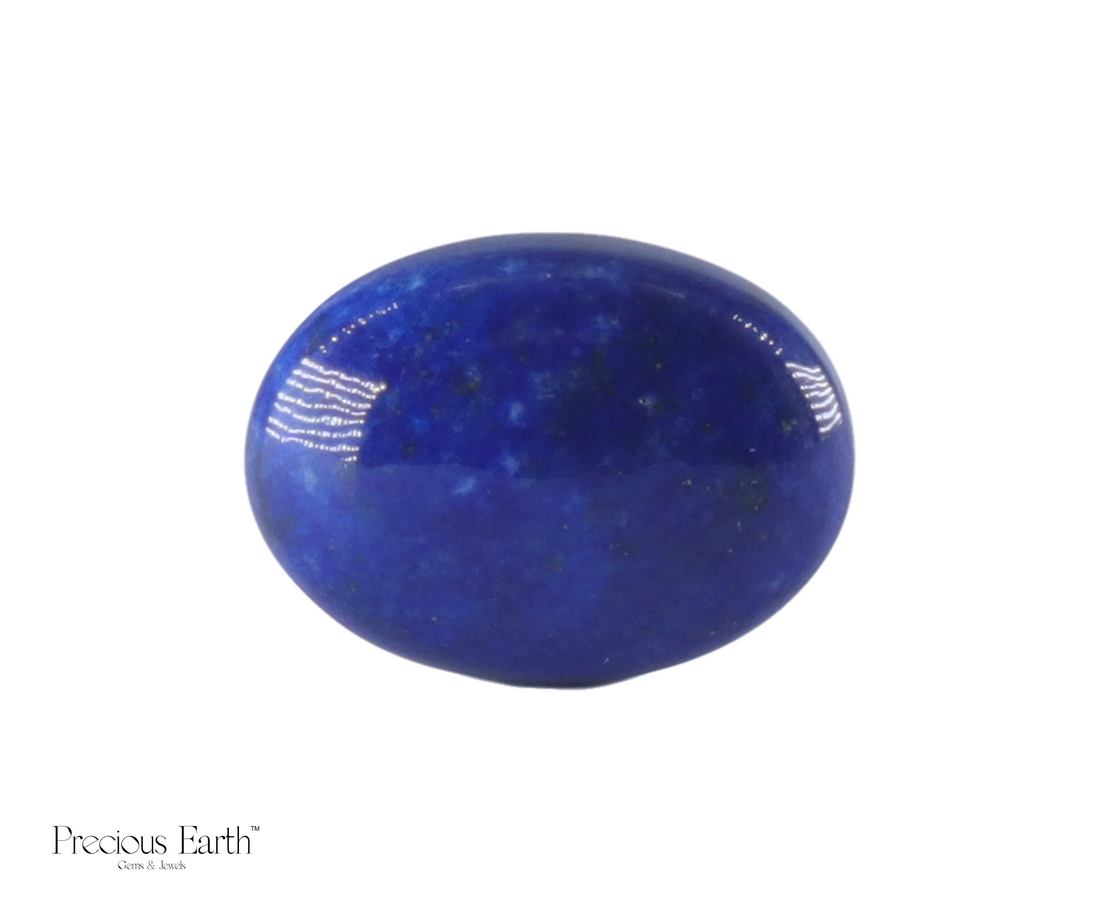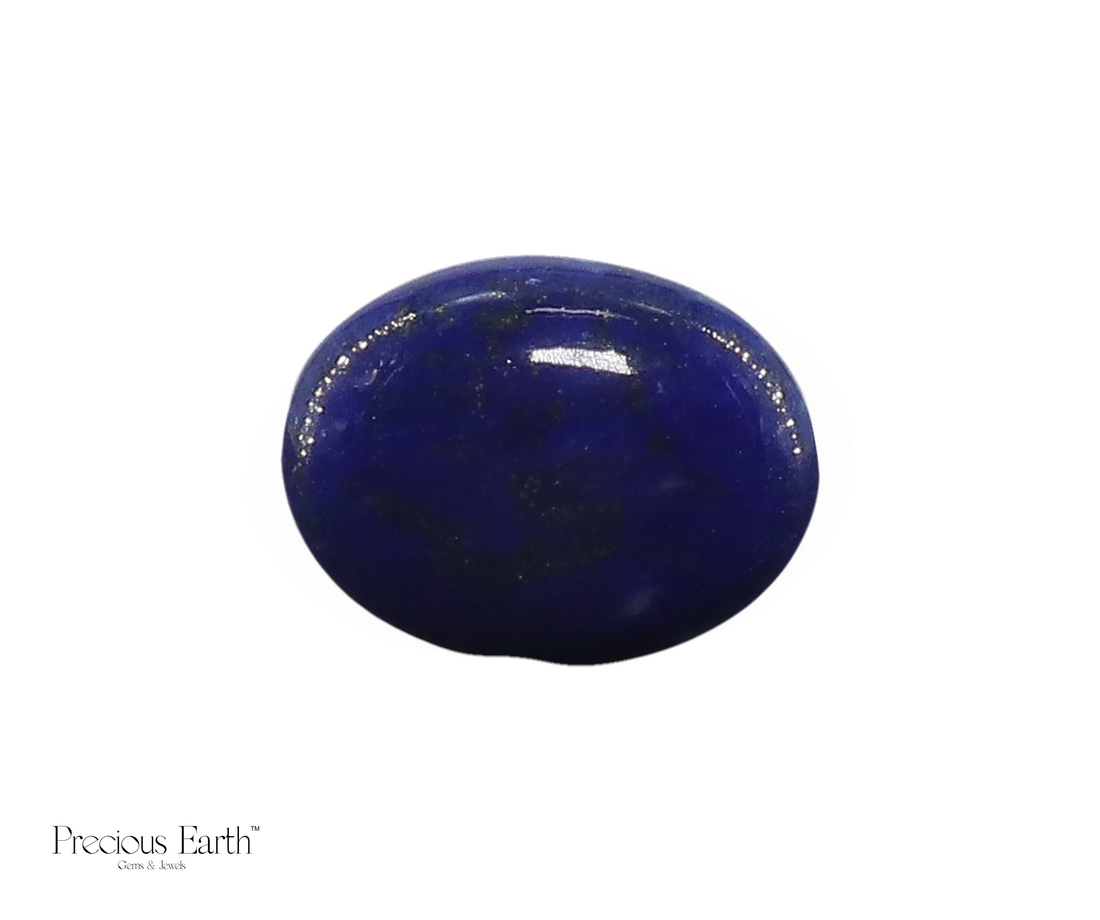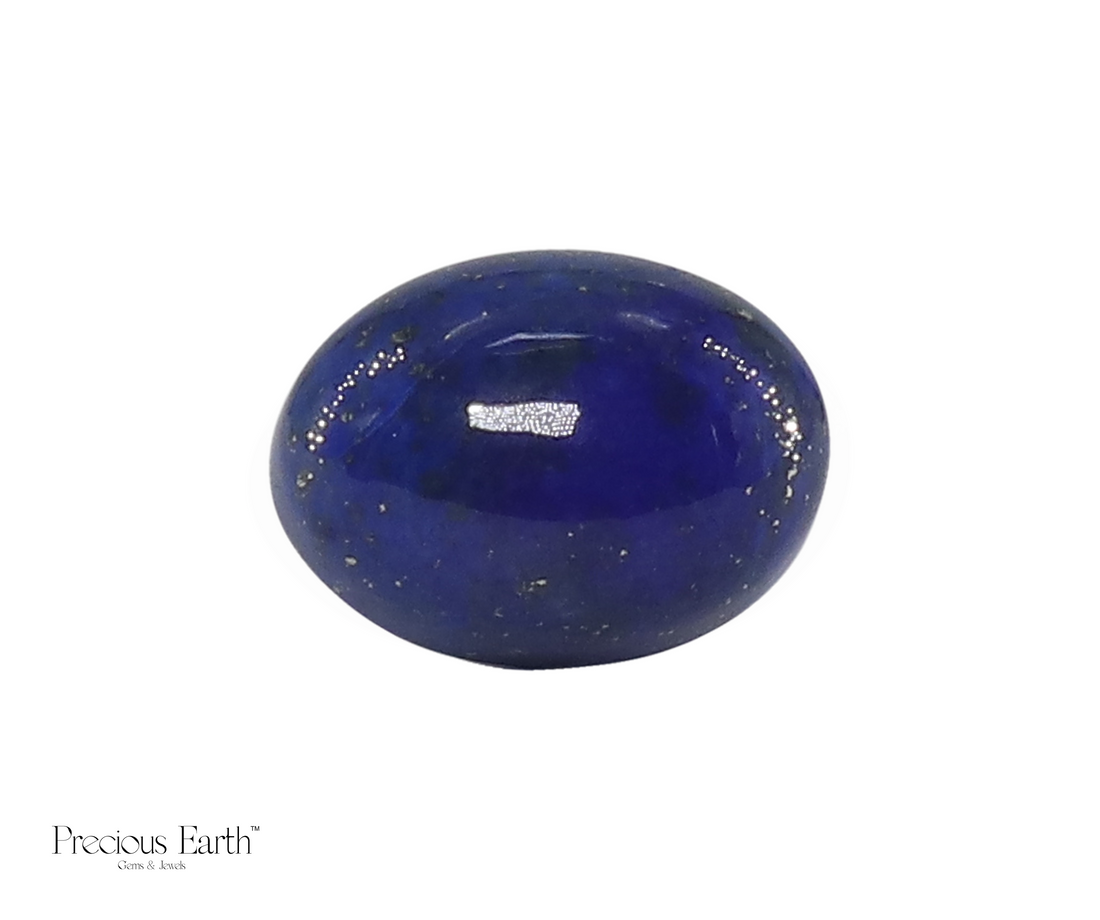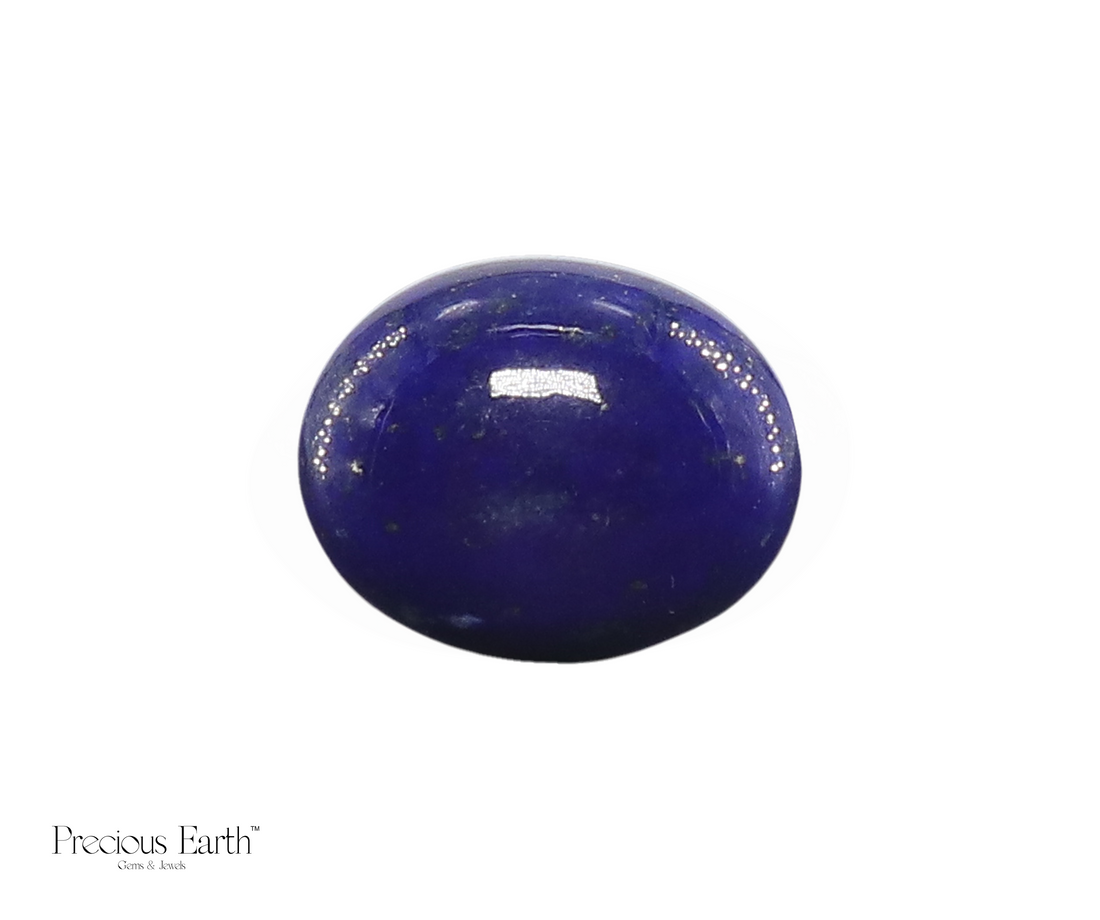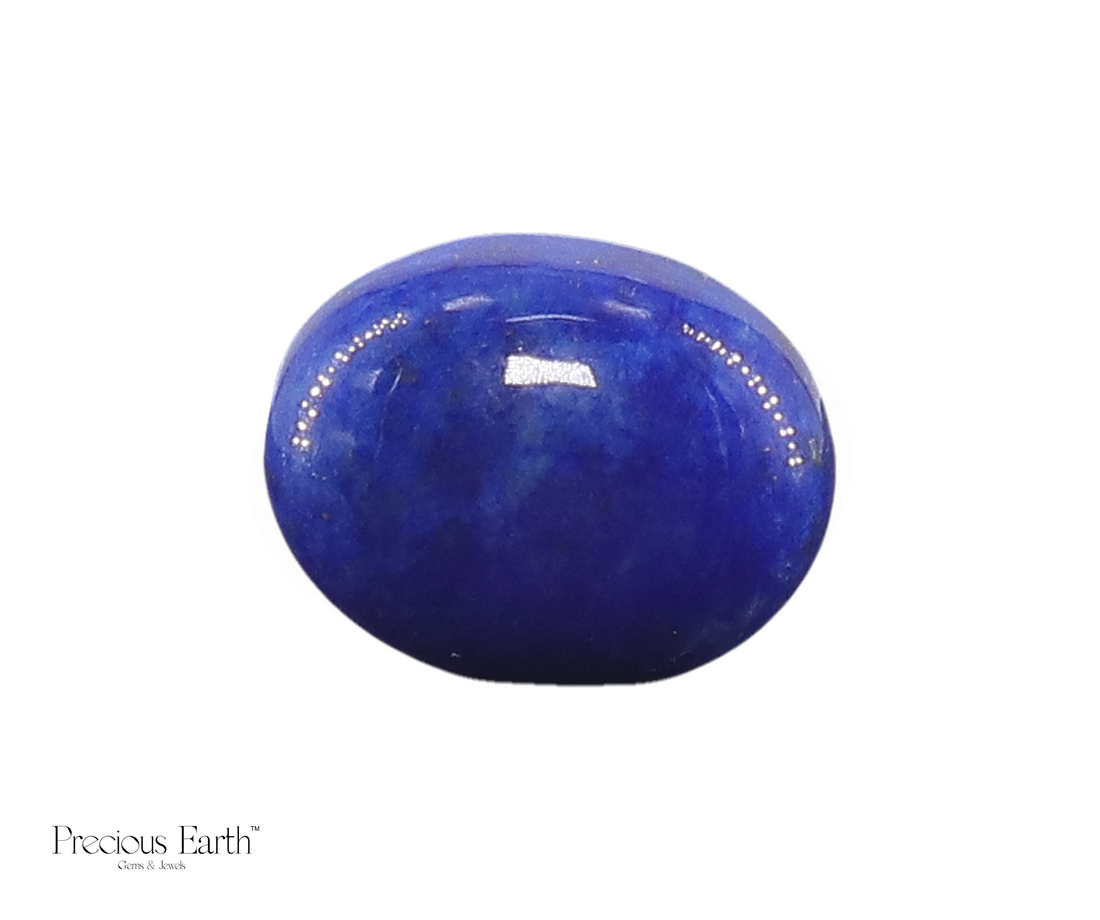This article serves as part of an ongoing series of profiles on the different varieties of precious & semi-precious gemstones. To view the entire list, click here.
Embark on a journey into the captivating world of Lapis Lazuli, a gem that effortlessly captivates the soul with its mesmerizing allure. From its enchanting deep blue hues adorned with shimmering flecks to its profound healing and protective properties, Lapis Lazuli stands as a beacon of tranquillity and enlightenment.
Often mistaken for cabochon blue sapphire, Lapis is renowned for instilling harmony and serenity. This esteemed blue gemstone is a decorative ornament and a profound tool for inner exploration and revelation. Journeying through time, Lapis Lazuli has woven its tale into the tapestry of human history, gracing the halls of ancient Egyptian tombs and immortalizing in Michelangelo's masterpieces adorning the Sistine Chapel ceiling. Join us on a journey to unlock the potential of this timeless gemstone and bring balance and serenity into your everyday life. Here is everything you need to know about lapis lazuli.

Lapis Lazuli stones are generally cut en-cabochon
1. Lapis Lazuli - Formation & Occurrence
Unlike many gemstones such as quartz, sapphire, amethyst, tourmaline, and peridot, lapis lazuli is not a single mineral but rather a composite rock comprised of various components. The primary mineral is lazurite, or lapis, a blue silicate belonging to the sodalite group, which typically accounts for 30-40% of the rock.
The gem also commonly contains calcite and pyrite, but other minerals such as sodalite, hauyne, wollastonite, afghanite, mica, dolomite, and others may also be present. A rock classified as lapis lazuli must display a distinct blue colour and consist of at least 25% lazurite. Calcite, or calcium carbonate, often white, is generally the second most abundant component in lapis lazuli. It can form layers, fractures, or mottling within the stone. Calcium carbonate also mixes finely with lapis, resulting in a faded denim hue. Pyrite is usually present as small gold-coloured grains scattered throughout. Depending on the stone's metamorphic history and chemical makeup, additional minerals like augite, diopside, enstatite, mica, hornblende, and nosean may be found.
This gemstone typically forms near igneous intrusions where limestone or marble undergoes alteration due to contact or hydrothermal metamorphism. Lazurite replaces parts of the original material within these host rocks, often developing within specific bands or layers. These metamorphic processes result in lapis lazuli's unique blue colour and layered structure.
2. Where Are Lapis Lazuli Stones Found?
One of the premier deposits of lapis lazuli is located in northeastern Afghanistan, within the remote Badakhshan region. The celebrated Sar-e-Sang mine has been operational for over 7,000 years, representing one of the oldest continually producing gemstone mines worldwide. The lapis extracted from this renowned deposit are prized for their exceptional quality, featuring brilliantly saturated blue hues.
Significant quantities also originate from adjacent areas of northern Pakistan near the Afghan border. Elsewhere, the mountains of Chile yield lapis deposits, though the stone here often exhibits prominent calcite mottling. Minor commercial production occurs in Russia near Lake Baikal in Siberia. Small-scale mining has also taken place in the United States at deposits in Colorado and northern Myanmar.
Throughout its long history, the Sar-e-Sang mine has epitomized the finest of the kind globally. No other source quite rivals the intense, vibrant blue shades and clarity of material extracted from Badakhshan province.
 Afghan Lapis Lazuli (Source: BBC)
Afghan Lapis Lazuli (Source: BBC)
3. The Colour Span of Lapis Lazuli
Lapis lazuli is renowned for its rich blue hue, which has historically made it a prized pigment known as ultramarine. This pigment is derived from finely ground high-quality stones and achieves a vivid blue shade through careful preparation. Removing impurities results in a fine powder with a saturated color used in art and painting for over a millennium.
Revered by ancient Egyptian, Greek, and Renaissance artists for its color saturation and durability, the ultramarine pigment was highly esteemed in various civilizations. While synthetic alternatives exist today, genuine lapis lazuli pigment continues to be appreciated by artists for its unique chromatic properties and historical significance.
The gemstone occurs in a range of pale to dark blue shades, from bluish-green to violet-blue. Its highest-quality form displays an even colouration without white streaks. Trace pyrite or fool's gold inclusions can increase beauty if small and evenly distributed, while more significant fool's gold or white veins decrease the value by producing a duller or greener appearance.
While famously dark blue, lapis lazuli also forms in lighter hues. The combination of its mineral constituents determines precise color - the lapis mineral produces its renowned royal blue, whereas the mineral afghanite causes a paler shade. However, close examination reveals that lapis lazuli exhibits a beautiful spectrum of blues within its composition. Reflecting its iconic deep blue appearance, its name derives from Latin and Persian terms for "stone" and "blue.”
4. Common Inclusions in Lapis Lazuli
Lapis lazuli comprises several minerals, each contributing to its unique appearance. Common inclusions found in lapis lazuli include:
- Pyrite: Often occurring as golden flecks or veins within the blue matrix, it is a common inclusion in the gemstone These golden specks give lapis its characteristic sparkle.
- Calcite: Sometimes, small white patches or streaks of this mineral can be found within this gemstone. These inclusions can vary in size and distribution throughout the stone.
- Sodalite: Lapis lazuli may contain veins or patches of sodalite, a blue mineral that can resemble the color of the surrounding lapis but typically appears lighter and less intense.
- Diopside: Greenish-black diopside inclusions are occasionally found in lapis lazuli. These inclusions can add interesting contrasts to the predominantly blue stone.
- Haüyne: In rare instances, it may contain Haüyne, a mineral that contributes to its blue coloration. Haüyne is often found in smaller quantities than lapis.
- Augite: Augite, a common black or dark green mineral in igneous rocks, can sometimes be found as inclusions in lapis lazuli. These inclusions can appear as small dark specks within the blue matrix.
- Mica: Mica inclusions, which can range in color from silvery-white to yellow-brown, may occasionally be present in lapis lazuli. These inclusions can add a subtle shimmer to the stone.
 Pyrite inclusions in Lapis Lazuli
Pyrite inclusions in Lapis Lazuli
5. Common Treatments & Enhancements of Lapis Lazuli
While generally durable, some treatments and enhancements can affect the appearance and value of lapis lazuli. Here are some common treatments associated with this gemstone:
- Dyeing: To enhance color or create a more uniform look, lapis lazuli may be dyed. While this improves visual appeal, dyed stones typically hold less value than untreated ones.
- Surface Coating: A thin layer of wax, resin, or similar material might be applied to improve luster or protect the surface of lapis lazuli. This treatment enhances appearance but can wear off over time.
- Impregnation: To improve stability and reduce the risk of scratches or fractures, lapis lazuli may be impregnated with oils or resins. This treatment might slightly alter the stone's appearance but can be beneficial for its long-term durability.
| Mineral | Lazurite, Pyrite, & Calcite |
|---|---|
| Colour Span | Deep violet blue, royal blue, light blue, turquoise blue, greenish blue |
| Popular Origins | Afghanistan, Chile, Russia, Pakistan, etc. |
| Mohs Hardness | 5.00 - 6.00 (on a scale of 10) |
| Common Treatments | Dyeing, Surface Coating, & Impregnation |
| Birthstone | February |
Lapis Lazuli - A Quick Snapshot
6. Evaluating the Quality of a Lapis Lazuli
Let us explore the key characteristics that define the quality and value of lapis lazuli gemstones. In this regard, it makes sense to consider the 4Cs:
- Color: The finest quality lapis lazuli exhibits a blue to purplish-blue hue with an even color distribution, characterized by a tone of 75-85%. Lighter shades of blue are often associated with bluer lapis, while those with purple undertones tend to be darker. Gemstones with a tone darker than 90% are generally less desirable as they appear overly dark and lacklustre.
- Clarity: Lapis lazuli stones are naturally opaque and commonly contain inclusions of pyrite, calcium carbonate, or both. Small inclusions, evenly dispersed within the stone, can resemble stars scattered across a night sky, a feature highly sought after by American consumers. However, gem graders classify these inclusions as clarity flaws. Larger inclusions, on the other hand, obscure the gem's vibrant blue color. Additionally, lapis may contain varying amounts of whitish calcite matrix or glinting yellow pyrite, which may detract from its overall appearance.
- Cut: Throughout history, lapis lazuli has been fashioned to accentuate its deep blue color. Common cutting styles for this gem’s jewellery be it bracelets, earrings or necklaces include cabochons, beads, inlays, tablets, and decorative carvings. Contemporary trends also feature freeform and nature-themed sculptures crafted from lapis, some of which may be wearable art, while others serve purely decorative purposes.
- Carat Weight: Pieces of uncut lapis lazuli stone can come in quite sizable chunks, so finding naturally fashioned gemstones of lapis lazuli is less common than with other gem varieties. These larger stones are often used in designer jewellery such as bracelets, earrings, and art objects or are carved into calibrated sizes for various purposes. The recommended weight for your Lapis Lazuli should be at least 1/10th of your body weight in carats.
7. How Much Does Lapis Lazuli Cost?
Lapis lazuli, while not generally considered an expensive gemstone, can still vary widely in quality and price. Lower grades of lapis lazuli may sell for about $1-3 per carat due to their lower quality and less desirable characteristics. However, truly fine material, characterized by deep, intense blue hues and minimal inclusions, is rare and commands higher prices. Superfine lapis lazuli, meeting these criteria, may fetch prices ranging from $100 to $150 per carat or even higher at retail outlets.
8. Lapis Lazuli in Astrology
In astrology, Lapis Lazuli is governed by Jupiter, a celestial giant within our solar system. According to astrological beliefs, those born under compatible zodiac signs such as Taurus, Libra, Sagittarius, or Capricorn may be bestowed with intelligence, wealth, success, and renown if they wear this February birthstone. In general, the following are some of the astrological benefits of wearing a Lapis Lazuli stone:
- Elevating Spirits: Lapis Lazuli symbolizes truth, wisdom, and heightened intellect, making it particularly suitable for individuals in creative fields. This potent stone fosters inner peace, intuition, and wisdom, instilling serenity and concentration while promoting fearlessness and motivation.
- Enhancing Concentration: With its ability to enhance focus and foster clarity of thought, Lapis Lazuli is believed to be often favored by those seeking to improve their productivity.
- Promoting Well-Being: Lapis Lazuli's mystical properties are believed to extend to physical and mental well-being, serving as a healer for various ailments. It aids in alleviating anger and negative thoughts, offering solace during emotional turmoil.
- Medicinal Benefits: In addition to its astrological significance, Lapis Lazuli possesses medicinal properties, aiding in the treatment of ailments such as migraines, headaches, and throat issues when worn close to the body.
 Lapis Lazuli in Astrology
Lapis Lazuli in Astrology
The captivating allure of lapis lazuli has enthralled humanity for millennia. From ancient civilizations to modern times, this gemstone continues to mystify with its shades of blue and signature mineral flecks. Whether used for artistic expressions, jewelry, spiritual purposes, or simply admired for its natural beauty, lapis lazuli stands as a timeless gem that uplifts the soul with its mesmerizing blue magnificence.
At Precious Earth, we offer a curated collection of authentic lapis lazuli pieces, meticulously sourced for their deep coloration and quality craftsmanship. Explore our range of gemstones and jewelry, including rings and pendants, each expertly crafted to highlight the natural elegance of lapis lazuli. Additionally, you can explore other precious & semi-precious gemstones like tourmaline, sapphire, quartz, citrine, peridot, aquamarine and amethyst in our diverse collection.

